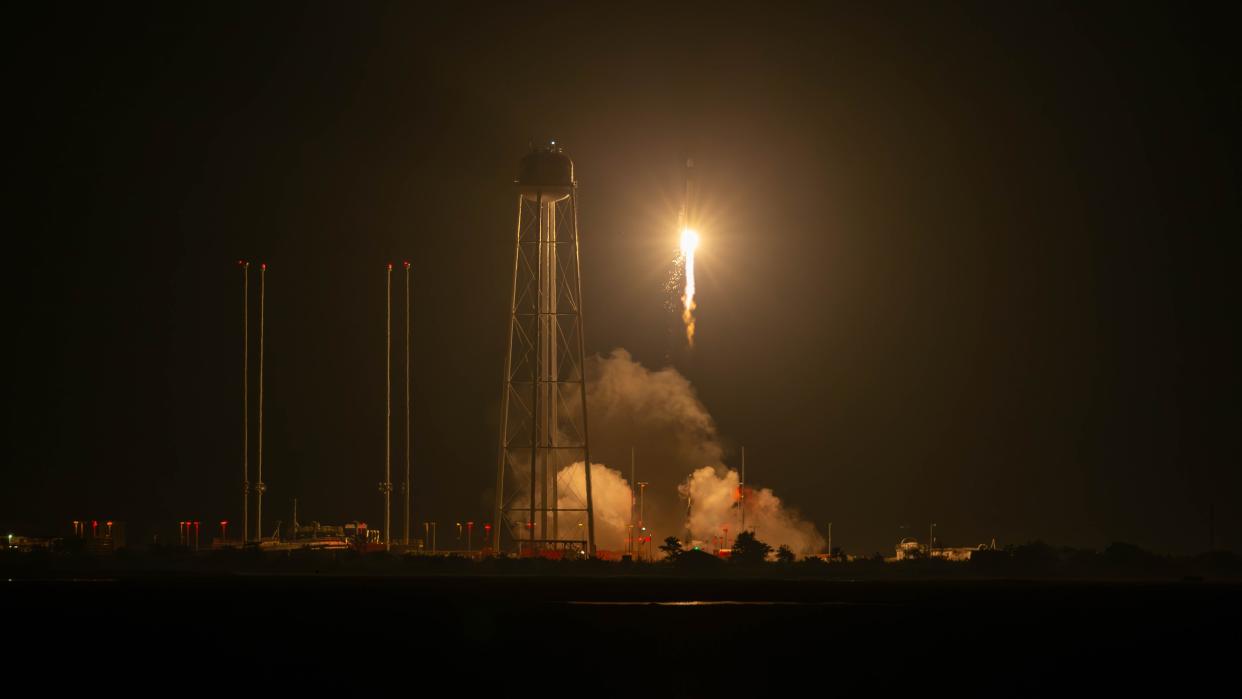Rocket Lab's modified Electron rocket HASTE achieves first suborbital launch

Rocket Lab's new suborbital launch vehicle— Hypersonic Accelerator Suborbital Test Electron (HASTE) — successfully completed a test flight on Saturday, June. 17.
The Hypersonic Accelerator Suborbital Test Electron (HASTE) lifted off at 21:24 EDT (01:24 GMT) from Rocket Lab's Launch Complex 2 at Virginia's Mid-Atlantic Regional Spaceport within NASA's Wallops Flight Facility, according to a press release from the company.
The company tweeted about the successful launch, writing: "Mission success for the launch of our new suborbital launch vehicle! HASTE took to the skies from Rocket Lab LC-2 in Virginia for a suborbital mission at 21:24pm Eastern. Congratulations to our mission partners, and welcome to a new era of hypersonic test launch capability!"
Mission success for the launch of our new suborbital launch vehicle! HASTE took to the skies from Rocket Lab LC-2 in Virginia for a suborbital mission at 21:24pm Eastern. Congratulations to our mission partners, and welcome to a new era of hypersonic test launch capability! pic.twitter.com/nz3V4hCNoTJune 18, 2023
The company also shared a stunning image taken by rocket photographer Kyle Henry which shows the HASTE rocket as it performed a dogleg maneuver on its way to deploying its payload.
Our first HASTE rocket takes flight from Rocket Lab Launch Complex 2 in Virginia with a dogleg maneuver on the way to payload deployment.📸: @kyle_LTS pic.twitter.com/qV6BowE1deJune 18, 2023
Related: SpaceX launches SATRIA-1 communications satellite for Indonesia, lands rocket at sea (video)
HASTE, which was launched for a confidential customer, is a suborbital launch vehicle that is derived from Rocket Lab's Electron rocket. The Electron is already the world's most frequently launched commercial small launch vehicle, according to Rocket Lab.
The company added that HASTE would leverage this heritage to offer "rue commercial testing capability at a fraction of the cost of current full-scale tests."
Comprised of the same innovative carbon composite structure and with the same 3D printed Rutherford engines as the Electron rocket, HASTE has a modified third stage for enables it to perform hypersonic suborbital payload deployment. The third stage of HASTE can be controlled to give it flight trajectories and payload release conditions that can be adjusted in accordance with the individual needs of client missions.
In addition to this, HASTE has an increased payload capacity with the launch system capable of hauling 1540 pounds (700 kilograms) to orbit. Rocket Lab said it also has the ability to be tailored to lift even larger payloads to space.
HASTE, which will operate under Rocket Lab National Security (RLNS), a Rocket Lab subsidiary created to serve the U.S. defense and intelligence community, also be capable of carrying air-breathing, ballistic re-entry, boost-glide, and space-based applications payloads.
"The success of this mission demonstrates collaboration across government and industry partners to change the paradigm in hypersonic testing," Global Launch Services Senior Director Brian Rogers said in a statement. "HASTE enables the frequent, affordable flight testing needed to advance the nation's hypersonic technology development, and we're proud to be delivering this vital capability.
"We thank our mission partners for entrusting us with this inaugural mission and look forward to continuing our partnership into the future."
Follow us on Twitter @Spacedotcom or on Facebook.

